A is for Alpaca, Anorak … Agriculture?
America’s Gift: What the World Owes to the Americas and Their First Inhabitants, Denis Vaugeois, translated and adapted by Käthe Roth, Baraka Books
By Louise Fabiani 04.10.2009 (from Rover Arts.com)
A is for Alpaca, Anorak … Agriculture?
Living in a cosmopolitan city like Montreal, one encounters numerous national cuisines. It is easy to assume that a culture’s culinary treasures are almost as old as its other traditions. So it is surprising to learn that many Old World meals go no further back than 1492, for the simple fact that their key ingredients were unknown until then.
Denis Vaugeois’s America’s Gift catalogues familiar dietary staples from the Columbian exchange: potatoes (to Ireland, Poland, Russia), tomatoes (to Italy), chili peppers (to Thailand), and peanuts (to several African countries), among others. While strongly emblematic of the “discovery” (or conquest, depending on your viewpoint) of the Americas, foods are but a small fraction of the earliest products of globalization. Gifts from the New World to the Old included building materials, clothing, place names, technologies, and team sports.
Vaugeois, an historian and former civil servant—with translator Käthe Roth—has organized everything in alphabetical order.
Thus, under A, we find such words as “Anorak,” originally an Inuit weatherproof jacket and now a kind of windbreaker, “Alpaca,” a South American member of the camel family, and “Agriculture.” The latter, as an introduced concept, seems impertinent, since the best evidence indicates that the first crops originated in the Middle East around ten millennia ago. Vaugeois says that it is the kind of cultivation—domesticated plants amongst wild ones, for example—which the Natives taught the newcomers.
The first entry under I is “Ideas,” and refers to the possibility that the “Noble Savage” inspired the Enlightenment. It is an interesting, if not original, proposition. However, whether some of the ideas attributed to Hurons, and others, actually belonged to them remains unclear.
Vaugeois pushes the envelope by also listing Slavery, Capitalism, and the Industrial Revolution. They were not gifts, of course, but they could not have existed without the Conquest. New lands opened up new sources of labour—practically gratis—which created the slave trade. And that, in turn, fuelled aspects of the industrial revolution. Vaugeois says silver from South America, made into coins, filled the coffers of the rich, spurring capitalism. In addition, if not for the right kinds of foods (most significantly, potatoes from the Andes), most European populations would not have expanded so quickly. Again, cheap labour (caused in part by the high unemployment found in crowded European cities) stoked the engines of the industrial age.
The text is engaging, for the most part, and the illustrations are chosen well. Unfortunately, despite her careful attention to English spelling and grammar, Roth could have used a scientific editor. For example, the entry for “Jerusalem Artichoke” states that its “tubers store insulin, which forms fructose and can be used in the diet of diabetics.” The tubers store inulin, a kind of sugar (insulin is an animal hormone).
America’s Gift contains the kind of information that should be required reading for all schoolchildren. However, some of the author’s bold assertions put the entire text on less than solid academic ground. As a result, the book is best considered a quick reference, and an incentive for further reading on this fascinating history.
Louise Fabiani, a Montreal science writer, critic, and poet, has a special interest in environmental issues.
www.roverarts.com

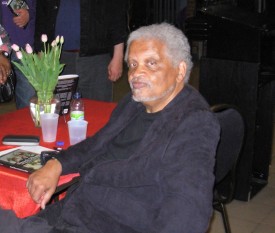
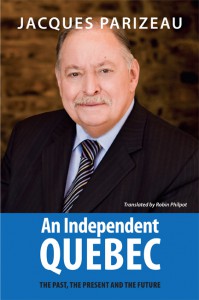 Drawing on his rich experience in public service and teaching, Jacques Parizeau explains how the idea of an independent Quebec took root and evolved, examines Quebec’s current economic, political, social and cultural situation, and reviews options for future development.
Drawing on his rich experience in public service and teaching, Jacques Parizeau explains how the idea of an independent Quebec took root and evolved, examines Quebec’s current economic, political, social and cultural situation, and reviews options for future development.

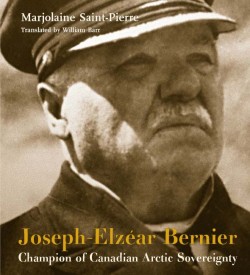 Given the political and climatic upheavals of the last few decades, the publication of this biography of Bernier is remarkably pertinent to issues facing Canada and other Arctic nations. Joseph- Elzéar Bernier was a French Canadian who was born in the small hamlet of L’Islet-sur-Mer, on the south shore of the St. Lawrence River in 1852. In this book the author traces the roots of the Bernier family from 1651 when Jacques Bernier landed in Quebec, through the early years of J.-E. Bernier, his subsequent experience as a sailor and captain, and then tracing his passion for Arctic exploration and his importance in ‘‘planting the flag’’ and claiming sovereignty for Canada for what is now its Arctic islands and channels.
Given the political and climatic upheavals of the last few decades, the publication of this biography of Bernier is remarkably pertinent to issues facing Canada and other Arctic nations. Joseph- Elzéar Bernier was a French Canadian who was born in the small hamlet of L’Islet-sur-Mer, on the south shore of the St. Lawrence River in 1852. In this book the author traces the roots of the Bernier family from 1651 when Jacques Bernier landed in Quebec, through the early years of J.-E. Bernier, his subsequent experience as a sailor and captain, and then tracing his passion for Arctic exploration and his importance in ‘‘planting the flag’’ and claiming sovereignty for Canada for what is now its Arctic islands and channels.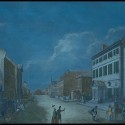
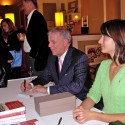
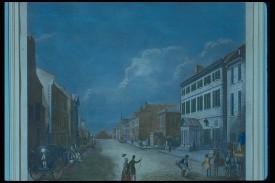
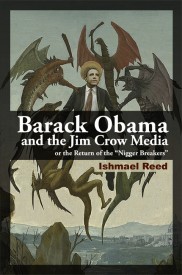 Under slavery, “Nigger breakers” had the job of destroying the spirits of tough black men by whatever means necessary. At age 15 Frederick Douglass was sold to Edward Covey who had the mandate to break him. Ishmael Reed makes the case that President Barack Obama is being assailed by 20th century descendants of Covey. In a series of essays written during the 2008 primaries and after Obama’s election, he shows how both Obama’s opponents and some supposed allies use modern reincarnations of those same ugly demons to break him. What’s more, statements and alliances he made during the campaign and in office have made him easy prey.
Under slavery, “Nigger breakers” had the job of destroying the spirits of tough black men by whatever means necessary. At age 15 Frederick Douglass was sold to Edward Covey who had the mandate to break him. Ishmael Reed makes the case that President Barack Obama is being assailed by 20th century descendants of Covey. In a series of essays written during the 2008 primaries and after Obama’s election, he shows how both Obama’s opponents and some supposed allies use modern reincarnations of those same ugly demons to break him. What’s more, statements and alliances he made during the campaign and in office have made him easy prey.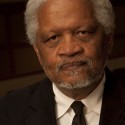 Ishmael Reed’s previous books of essays include Airing Dirty Laundry, Writin’ is Fightin’ and Shrovetide in Old New Orleans.
Ishmael Reed’s previous books of essays include Airing Dirty Laundry, Writin’ is Fightin’ and Shrovetide in Old New Orleans.

Facebook